Halfeti 'black' roses
nikthegreek
10 years ago
Featured Answer
Sort by:Oldest
Comments (60)
nikthegreek
10 years agoroseblush1
10 years agoRelated Discussions
Presentation of the Black Always Blooming Roses of Turkey
Comments (0)"This study was carried out between 2013-2017 years to determine the local names, general systematic characteristics, group characteristics, genotype number, distinguishing characteristics, ecological requirements and economic importance of blackish roses in Turkey. "Blackish roses" are a term used for the first time as a group name for roses that are black and close flower colors. It refers black and its allied roses. The studied plant materials were obtained from GUL Herbarium and Botanical Garden at SüleymanDemirel University. Always blooming roses in Turkey are generally R. odorata; and in small amounts to R. borboniana and R. chinensis species. The genotype number of them is around 20 in Türkiye. Five of these; Bursa (Kestel), Isparta (Atabey) and Şanlıurfa (Halfeti) are in high importance commercially and as local genotypes. When looked at the growing environments and spreading areas of black roses; light intensity, number of sunny days in year, and high temperatures are becoming important criteria. For this reason, they were considered as long day plants. Southeast Anatolian region meets the best ecological demands of these roses. This area is followed by the Mediterranean and Aegean regions. Black Sea and Thrace are the least suitable geographical areas. Considering the distribution areas and ecological requirements; the gene center of blackish roses was estimated as the Southeast Anatolian region and its environs. Successful rooting of stem steel in perlite environment is 15% and 5% in soil. The caring and growing of these roses is more difficult than others. The main reason for that is the ecological demands can not be met adequately by any regions, except for the Southeastern Anatolia region of Turkey. In this study; three hypotheses have been proposed about blackish roses." See: http://dogadergi.ksu.edu.tr/issue/37038/428843 ========================================================== Full paper in Turkish (You will have to cut and paste into Google Translate): http://dogadergi.ksu.edu.tr/download/article-file/480761...See MoreRose Garden Labels? Metal? Plastic? Silver, Black, Copper...?
Comments (8)Those copper tags are cute! I like that they go into the ground 10 inches. Maybe my chickens couldnt pull the tags off and run off with them as easily lol. I currently use those silver metal tags that you can press on with a pencil and kinda engrave them. They hold up pretty good. I have had some like 10 yrs! The wires end up breaking before the tag. I have to place tags up high via a wire onto the plants. Short plants around here, may not even have a tag due to critters....See More"Silicon tested in search to defeat the dreaded rose black spot"
Comments (2)Silicate has been studied extensively in a variety of crops over the past 20 years or so, and has shown to have av positive effect in enhancing disease resistance in a wide range of genera. I used Dyna-gro’s Pro-teKt for a while 15 years ago, on roses and couldn’t say that i saw definitive evidence of improved Blackspot resistance. But I didnt do a control study, so there may have been some effect that i just wasn’t measuring....See MoreSEVERE black spot on knockout rose bushes
Comments (4)Here's my way of figuring out watering: Average HIGH temperature that week 70°F. = 1 inch of water, rainfall or human means, or a combination of both equaling 1 inch. Average HIGH temperature that week 75°F. = 1.5 inches of water ".............." equaling 1.5 inches. Average HIGH temperature that week 80°F. = 2 inches of water "................." equaling 2 inches. Average HIGH temperature that week 85°F. = 2.5 inches of water "............." equaling 2.5 inches. On and on up the average high temperature that week dictates the amount of water a rose needs. Take into account humidity, wind, soil type, size and age of bush, varietal needs differences....also need to be factored in. Maybe my assumption the incredible highs most folks are experiencing, and the time the bushes were not cared for during Paula's vacation led me to blame a water deficiency for her roses' dilemma. Sorry for that. If Paula provides more information a more useful and correct answer can be arrived at. Sorry for my haste. Assuming things is best left to politicians! 😁 Moses...See Morejerijen
10 years agoporkpal zone 9 Tx
10 years agonikthegreek
10 years agoroseblush1
10 years agobuford
10 years agoUser
10 years agoporkpal zone 9 Tx
10 years agojerijen
10 years agoSarahRose123
9 years agoUser
9 years agonikthegreek
9 years agoDavidBeck
9 years agoportlandmysteryrose
9 years agoportlandmysteryrose
9 years agobelmont8
9 years agoAquaEyes 7a NJ
9 years agoTravis McKinstry
8 years agoAquaEyes 7a NJ
8 years agocountrygirlsc, Upstate SC
8 years agoBrittie - La Porte, TX 9a
8 years agojerijen
8 years agoBrittie - La Porte, TX 9a
8 years agoAquaEyes 7a NJ
8 years agostillanntn6b
8 years agotitian1 10b Sydney
8 years agoDavidBeck
8 years agoAnne Zone 7a Northern CA
8 years agoAnna Donaldson
8 years agoLK Scott
8 years agolast modified: 8 years agoDavidBeck
8 years agoDavidBeck
8 years agoAquaEyes 7a NJ
8 years agolast modified: 8 years agoDavidBeck
8 years agoAquaEyes 7a NJ
8 years agolast modified: 8 years agosultry_jasmine_nights (Florida-9a-ish)
8 years agolast modified: 8 years agoDavidBeck
8 years agoMahmut Olmez
7 years agolast modified: 7 years agoMahmut Olmez
7 years agofig_insanity Z7b E TN
7 years agoMahmut Olmez
7 years agolast modified: 7 years agoDavidBeck
7 years agoMahmut Olmez
7 years agonikthegreek
7 years agolast modified: 7 years agoAnne Zone 7a Northern CA
7 years agofig_insanity Z7b E TN
7 years agolast modified: 7 years agoDavidBeck
7 years agojerijen
7 years ago
Related Stories
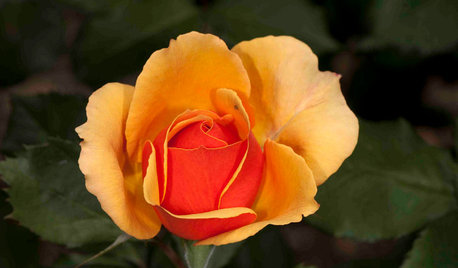
SPRING GARDENING5 Exotic Rose Colors for a Beautifully Different Garden
Give red a rest. Let these daring hues take the spotlight instead for a rose garden that turns heads
Full Story
GARDENING GUIDES6 Wonderfully Easy Roses for Any Gardener
Look like an expert even if you're just starting out, with these low-maintenance gems of the rose world
Full Story
GARDENING GUIDESWhat Kind of Roses Should You Grow?
Want to add the beauty of roses to your garden? Find out which ones, from old-fashioned to modern, are right for you
Full Story
GARDENING GUIDESGreat Design Plant: Knock Out Roses
As glorious as their high-maintenance kin for a fraction of the work, Knock Out roses make even beginners look like garden stars
Full Story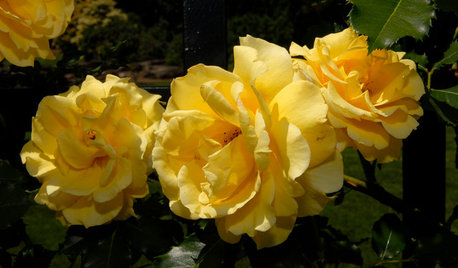
GARDENING GUIDES5 Favorite Yellow Roses for a Joyful Garden
Make 'cheery' the name of your garden game when you order your roses sunny side up
Full Story
SPRING GARDENINGHow to Grow a Rose Garden in Pots
Everything can come up roses, even without a plot of soil in sight. This step-by-step guide to growing roses in containers shows you how
Full Story
WINTER GARDENINGPruning Secrets for Exquisite Roses
Encourage gorgeous blooms year after year with this time-tested advice on how to prune your rosebush in winter for health and shape
Full Story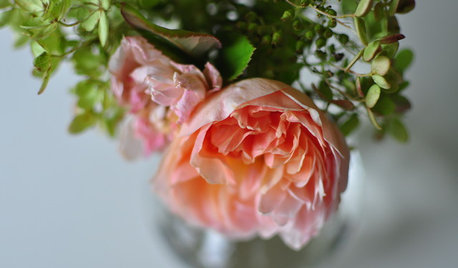
GARDENING GUIDESRoses: Crowning Touch of Gardens
Whether you're the Miss or Mister America of gardening or take a hands-off approach, roses can be a winning addition to your landscape
Full Story
PLANTING IDEASGreat Garden Combo: Rose + Clematis for Small-Space Impact
We all need somebody to lean on. And when a rose supports a climbing vine, the results can totally transform a small garden
Full Story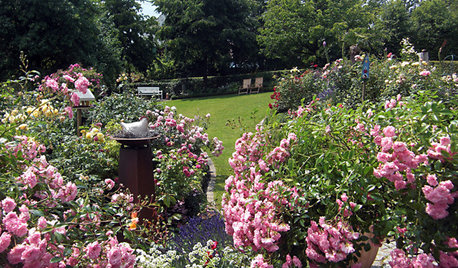
GARDENING GUIDES5 Sweet to Spirited Pink Roses for an Enchanting Garden
Whether you go demure or daring, there's a pink rose here to make you flush with garden pride
Full Story




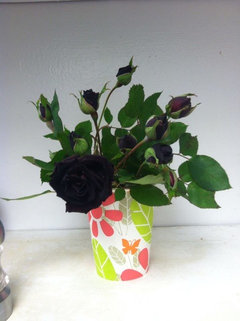



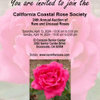


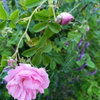
hoovb zone 9 sunset 23